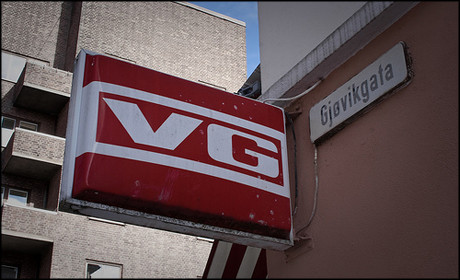
Can a newsroom realistically 'be the best' in both live, updating digital news and in-depth print journalism?
That was essentially the question posed by Torry Pedersen, editor-in-chief of Norwegian tabloid VG, previously Verdens Gang, who likened the challenged to trying to be the world's best sprint and marathon runner.
"Could the same newsroom handle it?" he asked. "Should you win both the marathon and 100m in same Olympics? I doubt it."
Online, for example, VG delivers a multi-stream live news experience when a "big news story" is ongoing.
The live content delivery offers web users the latest information across "5 or 6 different streams", viewable to a reader on one webpage.
The streams include social media content, live television feeds and the ability to engage with a VG journalist.
And the changing nature of reader behaviour on digital devices also demands a different approach.
"We are going away from one break a day, to maybe 20, 25, 30, 60 breaks a day," he said, particularly when you consider the way people check their mobile devices.
This means news outlets need to think about how they can "tell people interesting thing in those breaks", he said.
"Is it the same storytelling to do that as is in the newspaper? Probably not."
Starting seperate, then integrating
But while VG is innovating on digital, like many other news outlets, it also has print products to maintain. So how does it re-imagine formats for digital at the same time?
The answer at VG has been to set up new digital projects as their own businesses in the early days.
"Separate them in the infancy," Pedersen explained, "otherwise legacy culture will win and it’s too conservative".
Mobile, for example, is an important business area for VG, and was set up as its own business to start with.
This year its mobile-related business is predicted to generate £20 million in revenue, he said, having reported £15 million for 2013, and compared to £300,000 at launch in 2010. It also recently launched a mobile advertising agency in-house, he said, to build on that success.
Key to the growth of the business was the decision to introduce it as a "separate company", Pedersen explained, in terms of development, "not for editorial".
It spent three years on its own, Pedersen told Journalism.co.uk at today's event, before being re-integrated. Upon integration it is then vital to ensure that the digital voice was not drowned out by "legacy culture".
This followed the steps VG took back in 2000 to split its print and digital operations. This was sparked by the realisation "that maybe the future would be digital", Pedersen said.
The two were brought back together in 2011, when "economic development was in the way and growth of digital media needed more resources behind our digital enterprises", he explained.
In addition to mobile, video is also a key area of interest to VG, and its latest venture in this area WebTV has also been turned into its own company, and remains so to this day.
It has also proven key for engaging a younger generation, he said, with 72 per cent of views said to be "by people younger than 40".
Free daily newsletter
If you like our news and feature articles, you can sign up to receive our free daily (Mon-Fri) email newsletter (mobile friendly).









